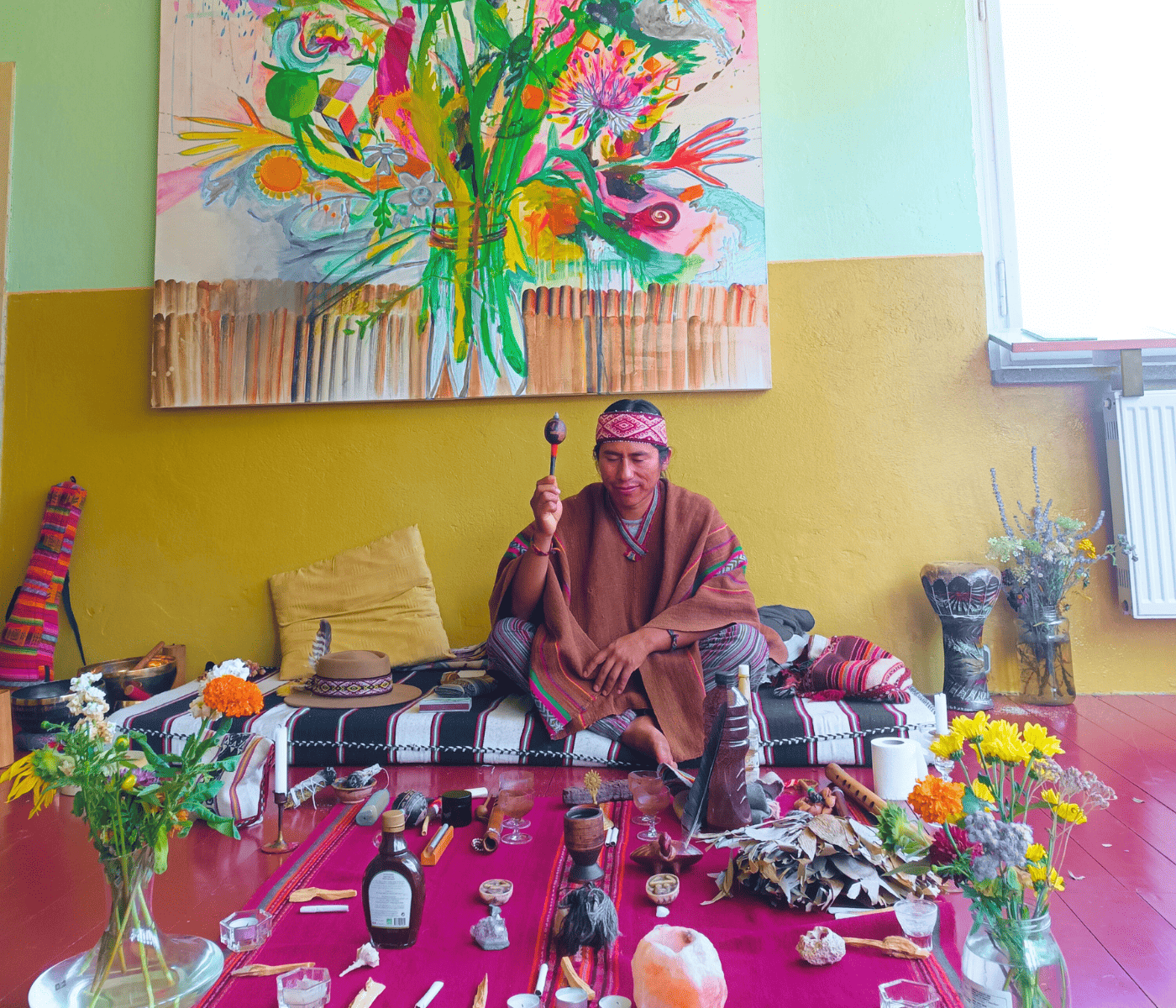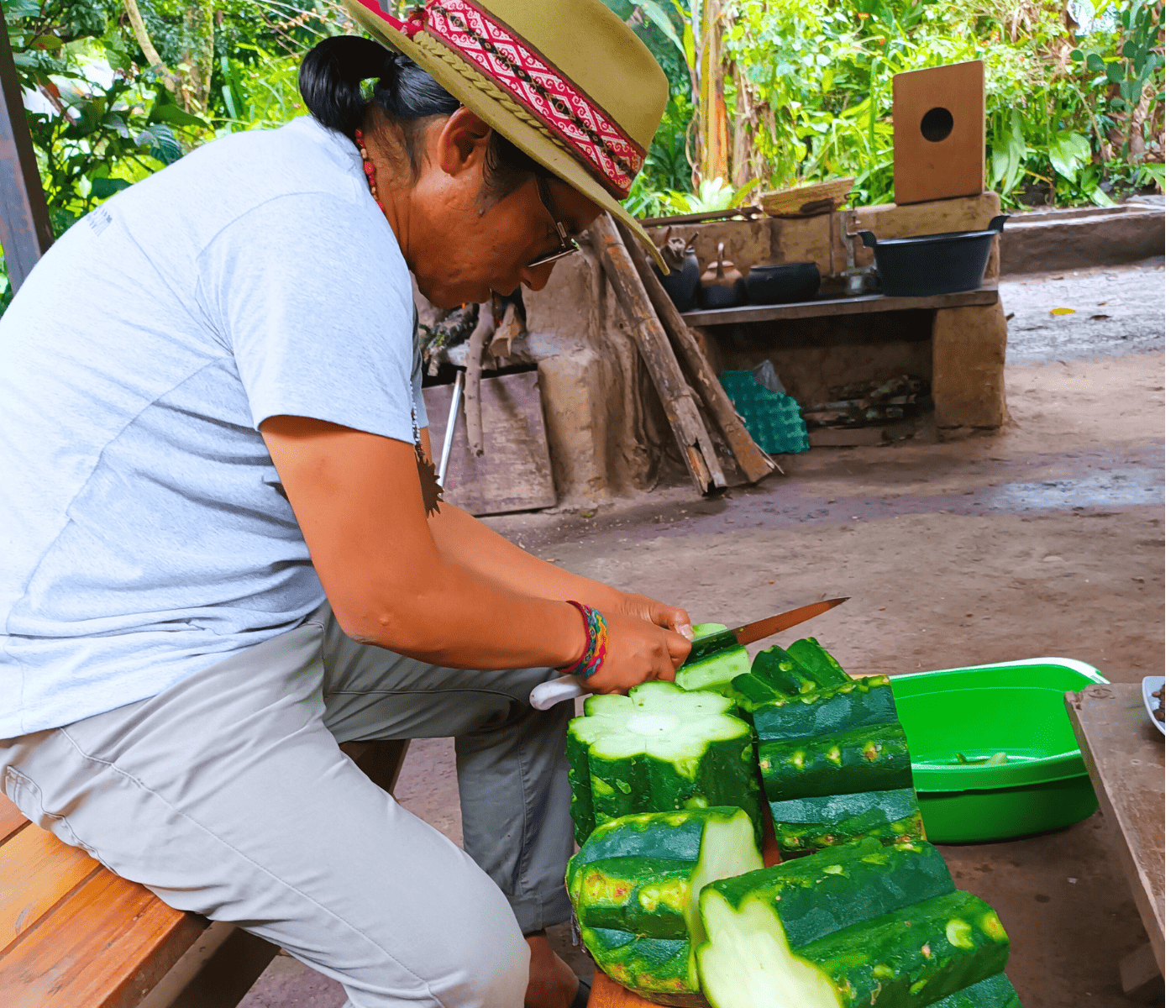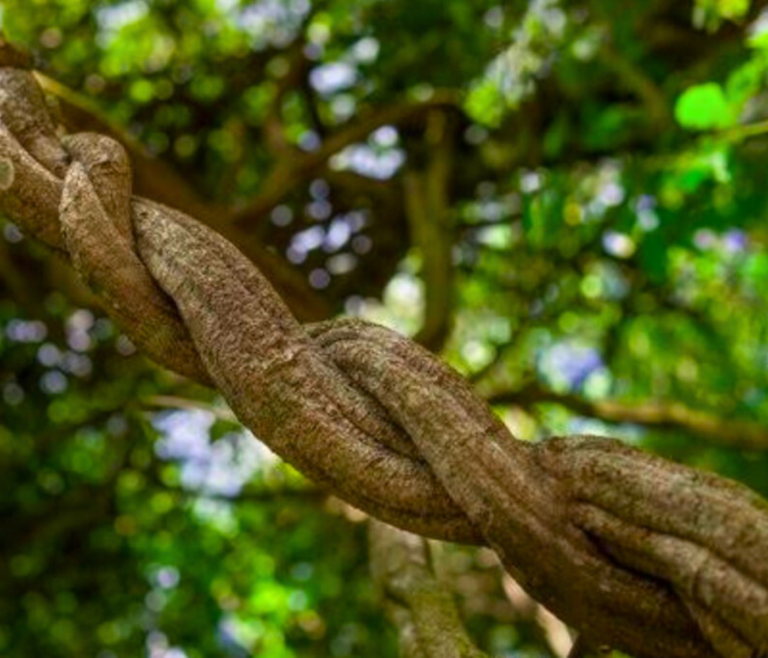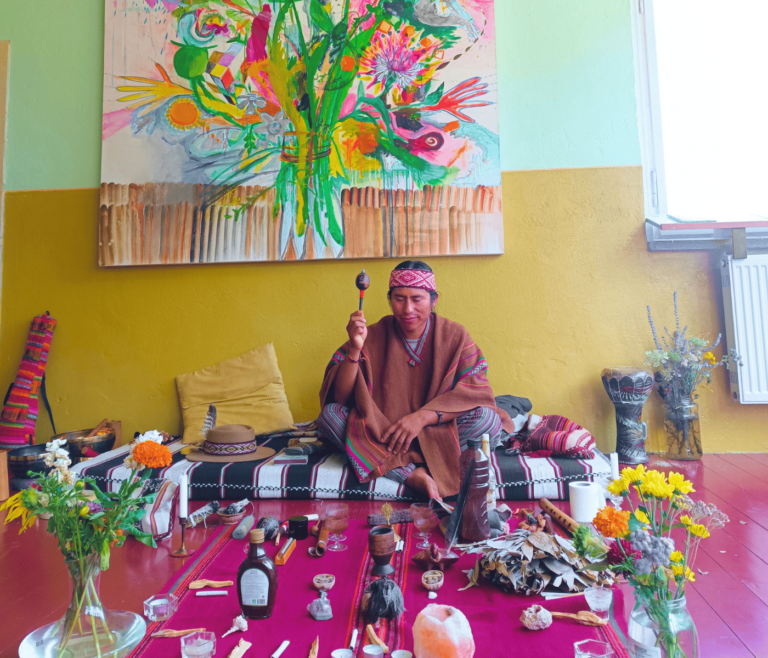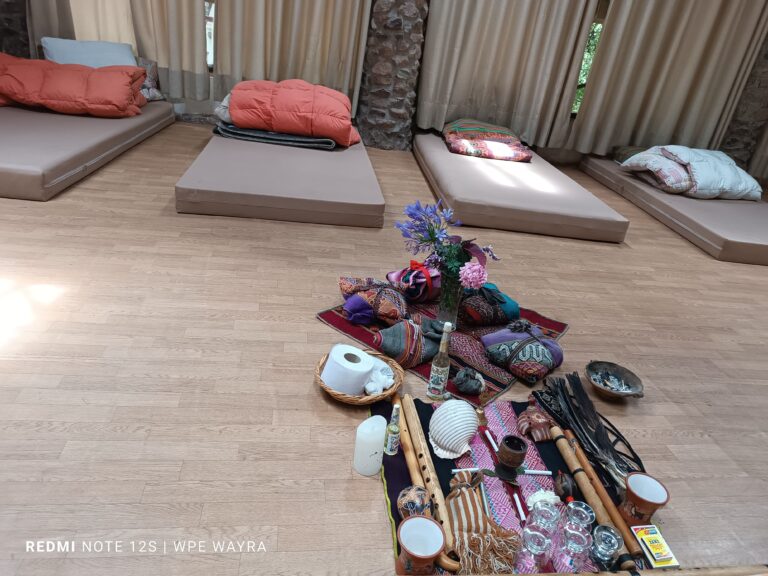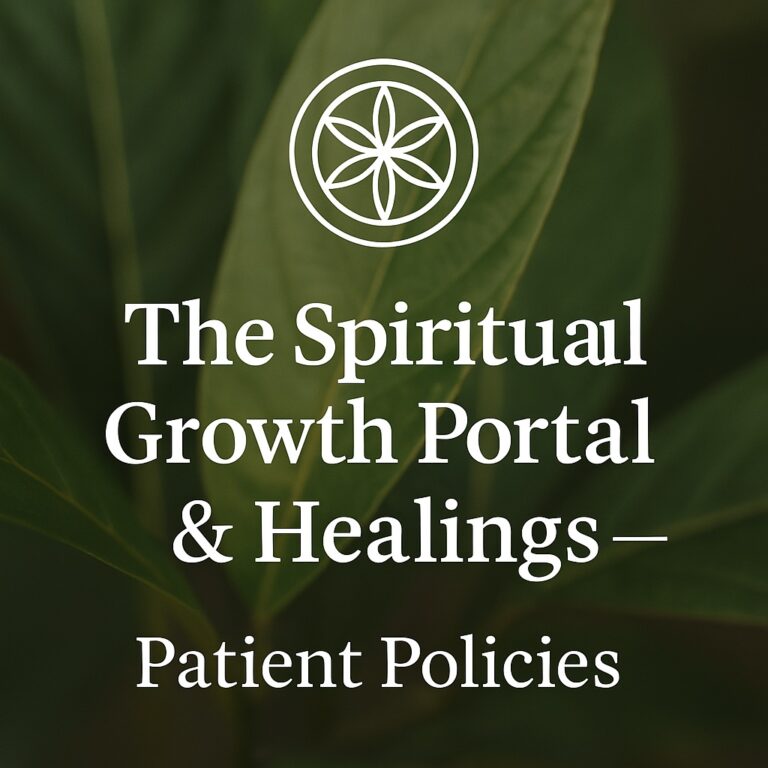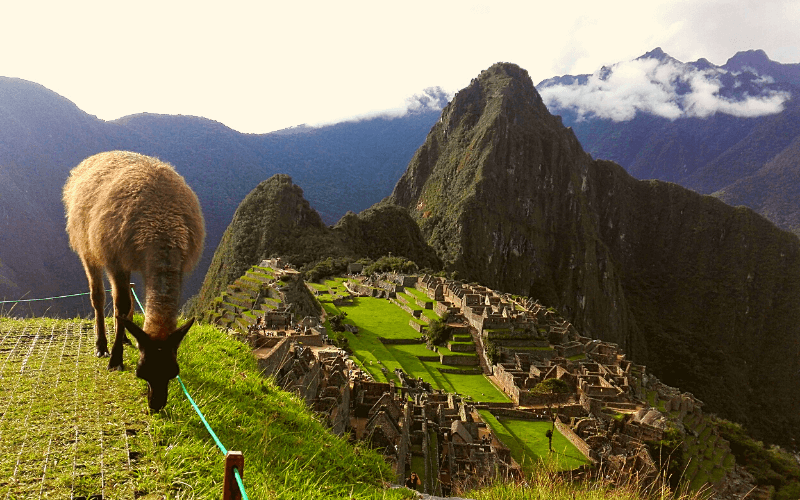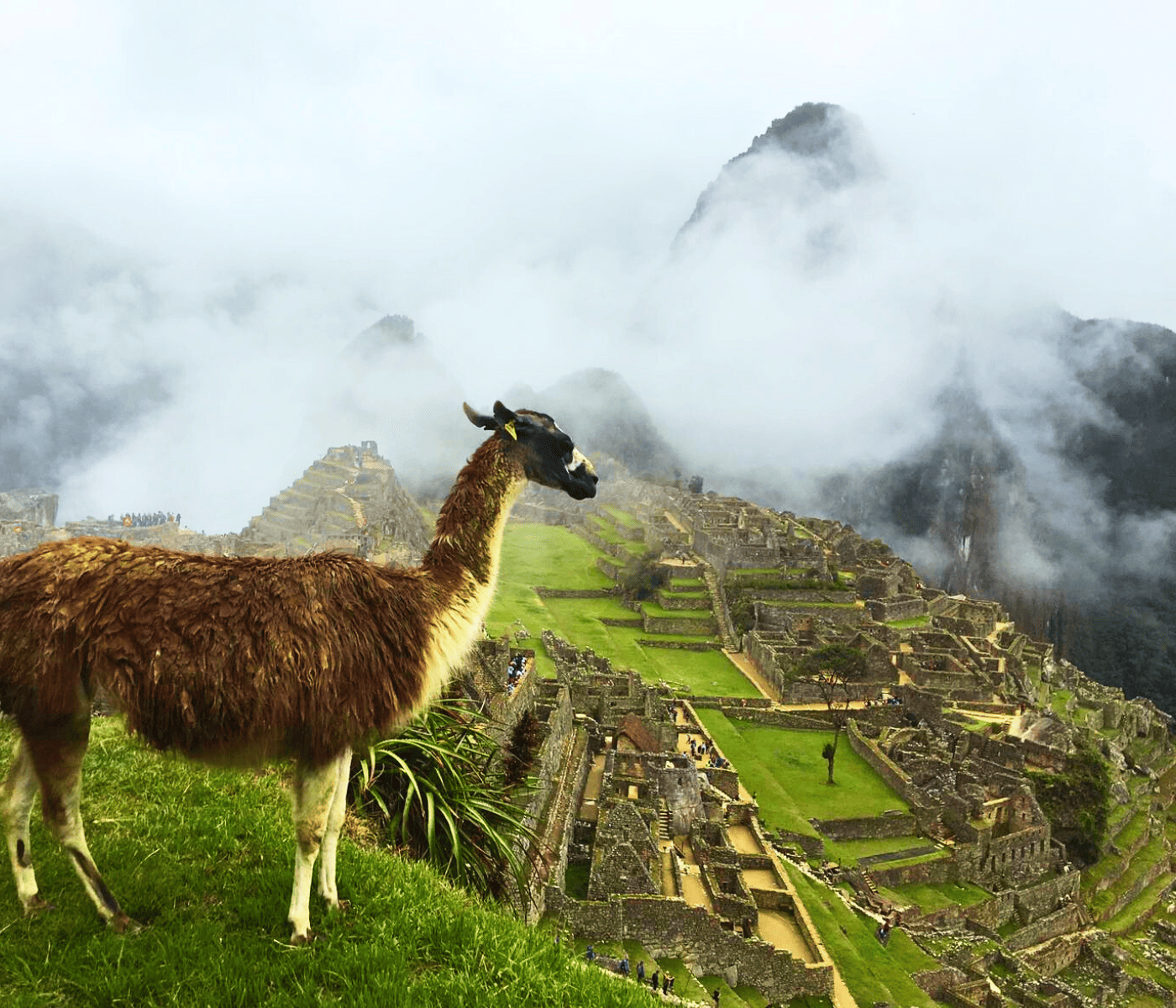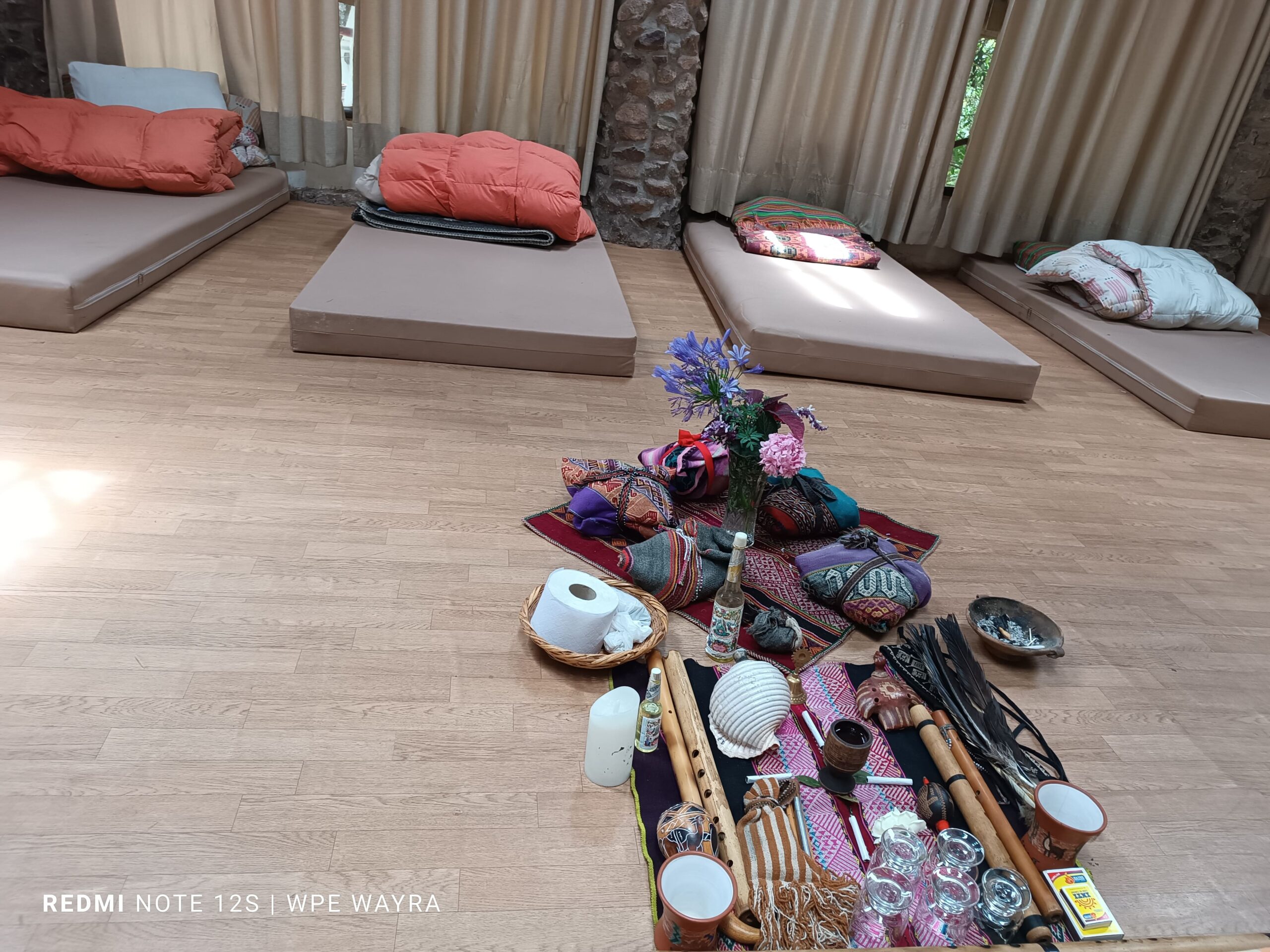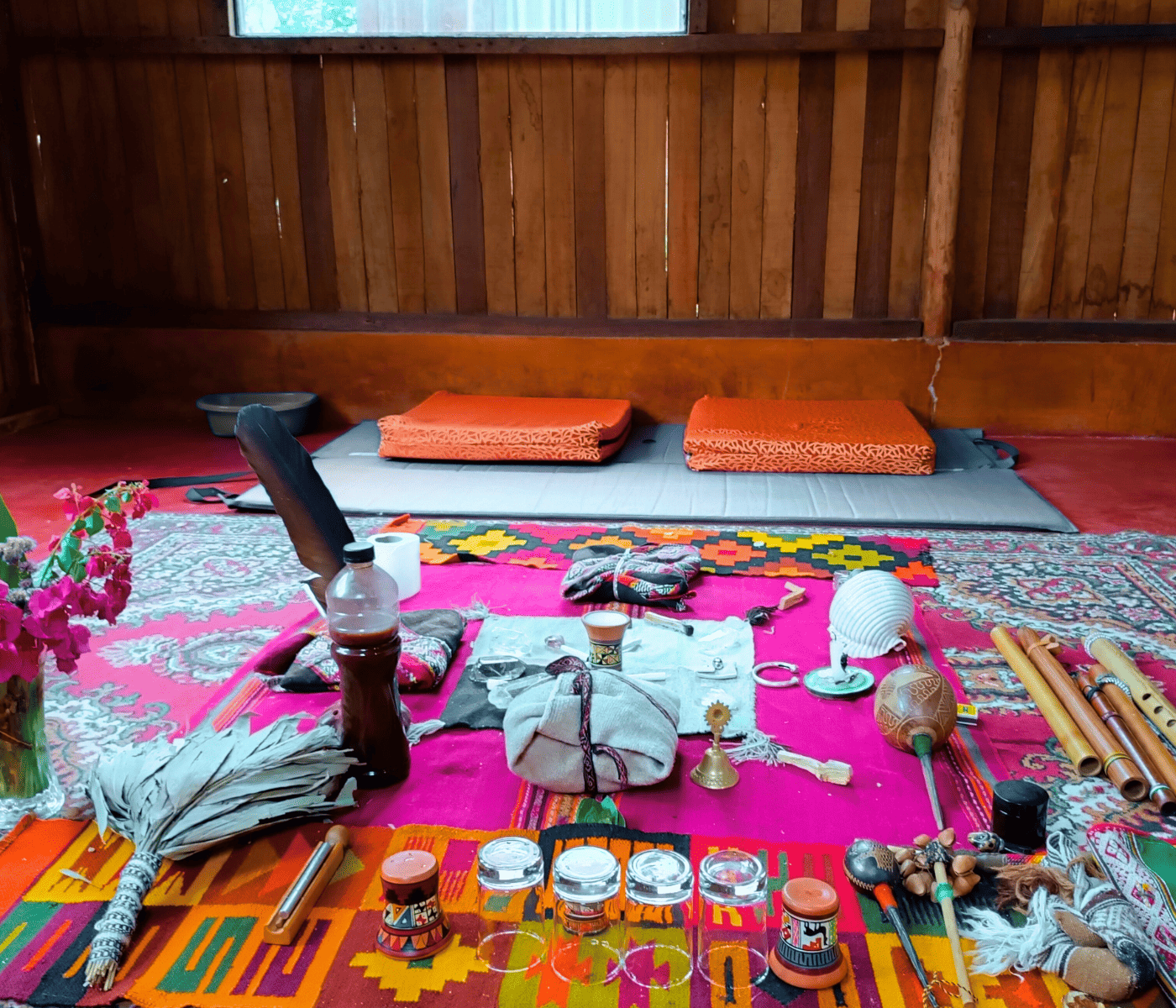- 12:00 PM: Pick-up from your hotel in Cusco and transfer to the retreat house in Sacred Valley (Urubamba). Personal conversation with the Ayahuasca Maestro to discuss your intentions.
- Rest & Preparation: Settle into your room, enjoy personal time to relax, and prepare for the first ceremony.
- Evening: The first Ayahuasca ceremony begins at 7:00 PM, initiating your sacred healing journey.
Day 2: Integration & Gratitude
- Morning: Breakfast, followed by an integration conversation with the Maestro.
- Gratitude Ritual: Offering gratitude to Pachamama, the Mountains, and the Spirits of Ayahuasca for their wisdom and healing.
- 11:00-12:00 PM: final reflection, sharing experiences, and closing the retreat.
- Transfer back to your hotel in Cusco.

